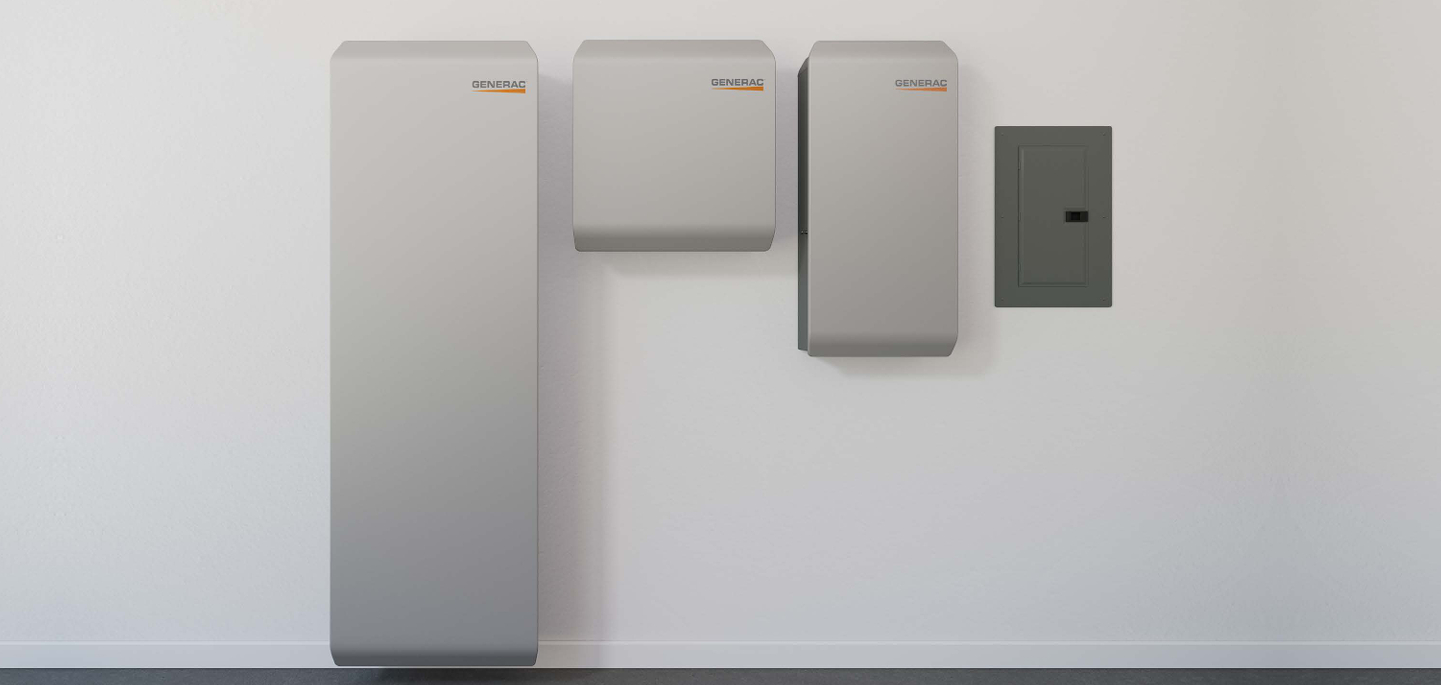Updated 3 weeks ago
Generac PWRcell 2 Battery: Cost, Specifications, and Expert Review
Written by Ben Zientara Ben ZientaraBen Zientara is a writer, researcher, and solar policy analyst who has written about the residential solar industry, the electric grid, and state util...Learn more , Edited by Catherine Lane Catherine LaneCatherine has been researching and reporting on the solar industry for five years and is the Written Content Manager at SolarReviews. She leads a dyna...Learn more

Why you can trust SolarReviews
SolarReviews is the leading American website for solar panel reviews and solar panel installation companies. Our industry experts have a combined three decades of solar experience and maintain editorial independence for their reviews. No company can pay to alter the reviews or review scores shown on our site. Learn more about SolarReviews and how we make money.
The Generac PWRcell 2 is a home energy storage system that can provide whole or partial home backup power. This is the second generation of Generac’s popular home battery solution, and the new version offers extra power output and new home integrations.
If you’re a homeowner looking for a backup power solution in case of a power outage, the Generac PWRcell should be on your shortlist. We put it in the #9 spot on our Best Solar Batteries of 2025 list.
Let’s look at what to expect when it comes to cost, features, and how Generac compares to the competition.
Key Takeaways
A typical Generac PWRcell 2 system costs between $14,000 and $25,000 before incentives.
The system includes a modular battery cabinet, inverter, and smart disconnect switch for partial or whole home backup.
The PWRcell battery can charge from solar, the grid, or even one of Generac’s home standby generators, allowing you to keep the power on for extended periods of time during an outage.
Compared to other leading home energy storage systems, the Generac PWRcell is a bit more expensive but offers some unique functionality, like controlling your home’s HVAC system to extend battery life.
SolarReviews recommends the PWRcell for people who have or want a Generac standby generator in addition to the battery.
How much does the Generac PWRcell 2 cost?
A Generac PWRcell 2 series battery system costs between $14,000 and $25,000 without solar panels, depending on the size of the battery (9 to 18 kWh) and your location. Another PWRcell cabinet with an additional 18 kWh of storage can be added to the system for about $15,000.
These costs would be in addition to a solar installation, so the total cost for a typical 18 kilowatt-hour (kWh) Generac PWRcell battery backup with a 6-kW solar installation would be around $43,000.
The Generac PWRcell system is customizable based on the needs of each specific customer, so we’ve included a range of prices for common configurations below. Generac products are sold through a nationwide network of licensed dealers, so pricing can vary depending on the area where you live.
PWRcell configuration | Type of use | Cost before incentives |
|---|---|---|
9 kWh (3 battery modules) | Small emergency backup or self-consumption | $14,000 |
18 kWh (6 battery modules) | Typical partial-home backup | $25,000 |
36 kWh (12 battery modules) | Typical whole-home backup | $40,000 |
Those prices might seem high—and they are. The Generac platform is meant to be a premium product that adds backup and home energy management capabilities to a home. Less-expensive batteries exist, including the excellent Enphase IQ 5P and Tesla Powerwall 3 (which is a great choice for new solar installation), but they won’t offer the unique functionality of the PWRcell, such as smart thermostat integration.
One bit of good news on cost is that the PWRcell is eligible for solar battery incentives, including ongoing payments for participating in virtual power plants in some areas. For starters, the federal clean energy tax credit can get you back 30% of the total cost to install the system. Information about state-level incentive programs can be found in our guide to solar battery rebates and incentives.
Generac PWRcell specifications and components
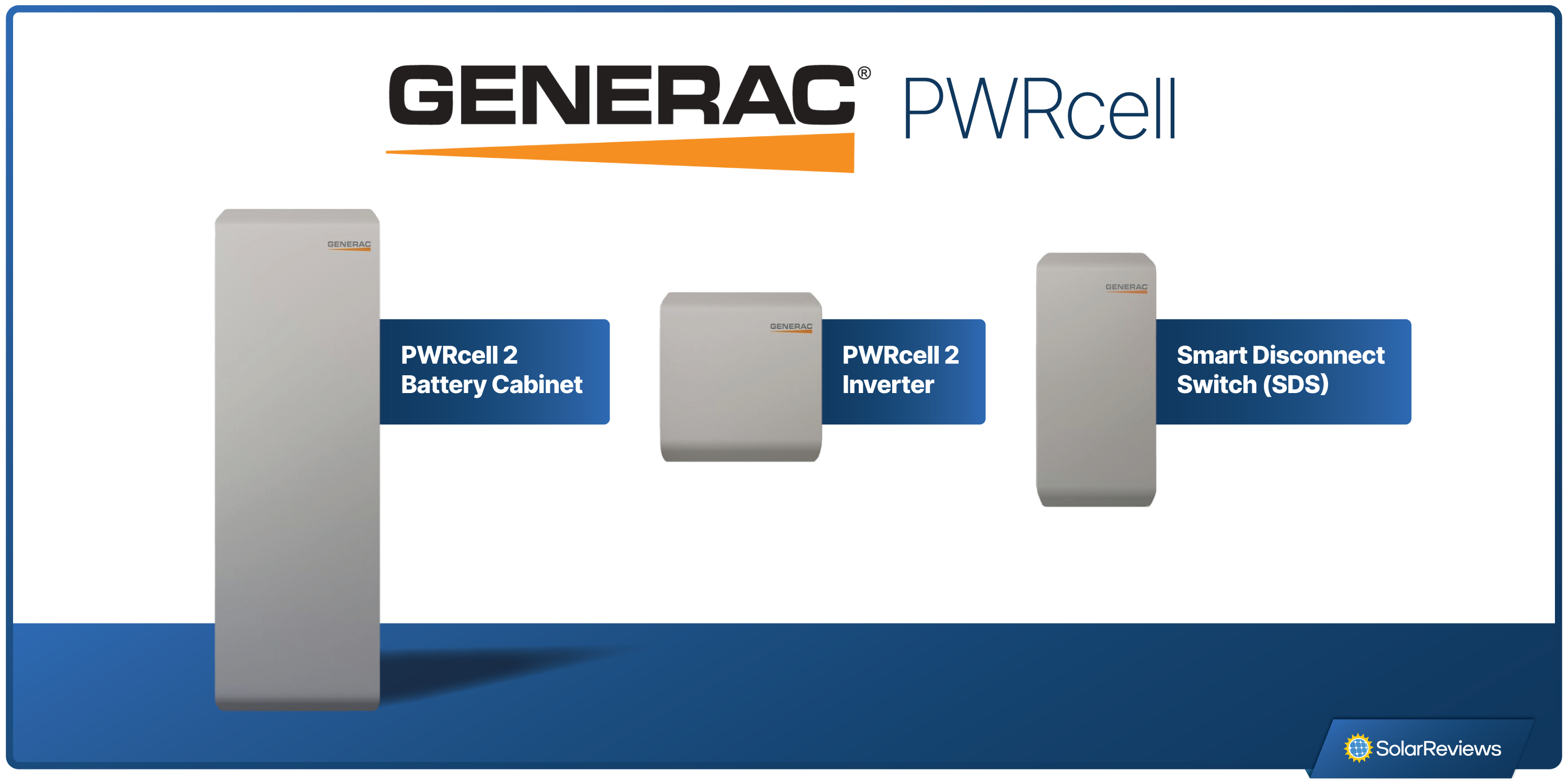
The new Generac Home Energy Ecosystem includes three main components:
PWRcell 2 Battery Cabinet
PWRcell 2 Inverter
Smart Disconnect Switch (SDS)
Like the previous generation, the battery cabinet can hold between 3 and 6 battery modules, equaling 9 to 18 kWh of energy storage capacity. Up to two battery cabinets can be connected to a single inverter, and two inverters can be used, for a total of 72 kWh of storage in a single installation.
The new PWRcell 2 Inverter switches the DC power from the battery to AC power for your home. It can output up to 11.5 kW of continuous power and provide up to 236 locked-rotor amps (LRA) to start a 5-ton air conditioner without a soft start device.
It is important to note that the PWRcell 2 inverter is AC-coupled only, meaning any solar installation must have its own inverter in order to connect and charge the PWRcell batteries. This is different from the original PWRcell, which had its own special string-level DC solar power optimizers and SnapRS rapid shutdown devices that caused major issues in some installations. It seems Generac has decided that DC power electronics are not worth the hassle, and have decided to leave the solar side of things to the companies that already do it well.
The Smart Disconnect Switch (SDS) is like a central hub where everything comes together. It connects between your home’s meter and main electrical panel (up to 200A), as well as the battery, AC solar panel output, and even a backup generator.
Thanks to the SDS, which can combine the power output of any or all of those sources, the PWRcell system can keep your home running during a power outage. It can accept up to 19.2 kW of AC solar power input, up to two PWRcell inverters (23 kW of output), and a 26 kW backup generator.
The specifications of the PWRcell system differ based on the total energy storage capacity. Generac identifies the PWRcell battery cabinet with the letter M and a number based on the number of battery modules inside. For example, M3 has three battery modules, M4 has four, and so on up to M6.
Here are the important specs of the PWRcell system based on battery capacity:
PWRcell model | Usable Energy (kWh) | Max. Continuous Power (kW) | Peak Inrush Power (kVA) | A/C Start Capacity (LRA) | Roundtrip Efficiency |
|---|---|---|---|---|---|
M3 | 9 | 5.1 | 15 | 76 | 88% |
M4 | 12 | 6.9 | 19 | 102 | 88% |
M5 | 15 | 8.6 | 24 | 127 | 88% |
M6 | 18 | 10.3 | 29 | 153 | 88% |
M6x2 | 36 | 11.5 | 42 | 236 | 88% |
Other components of Generac PWRcell systems
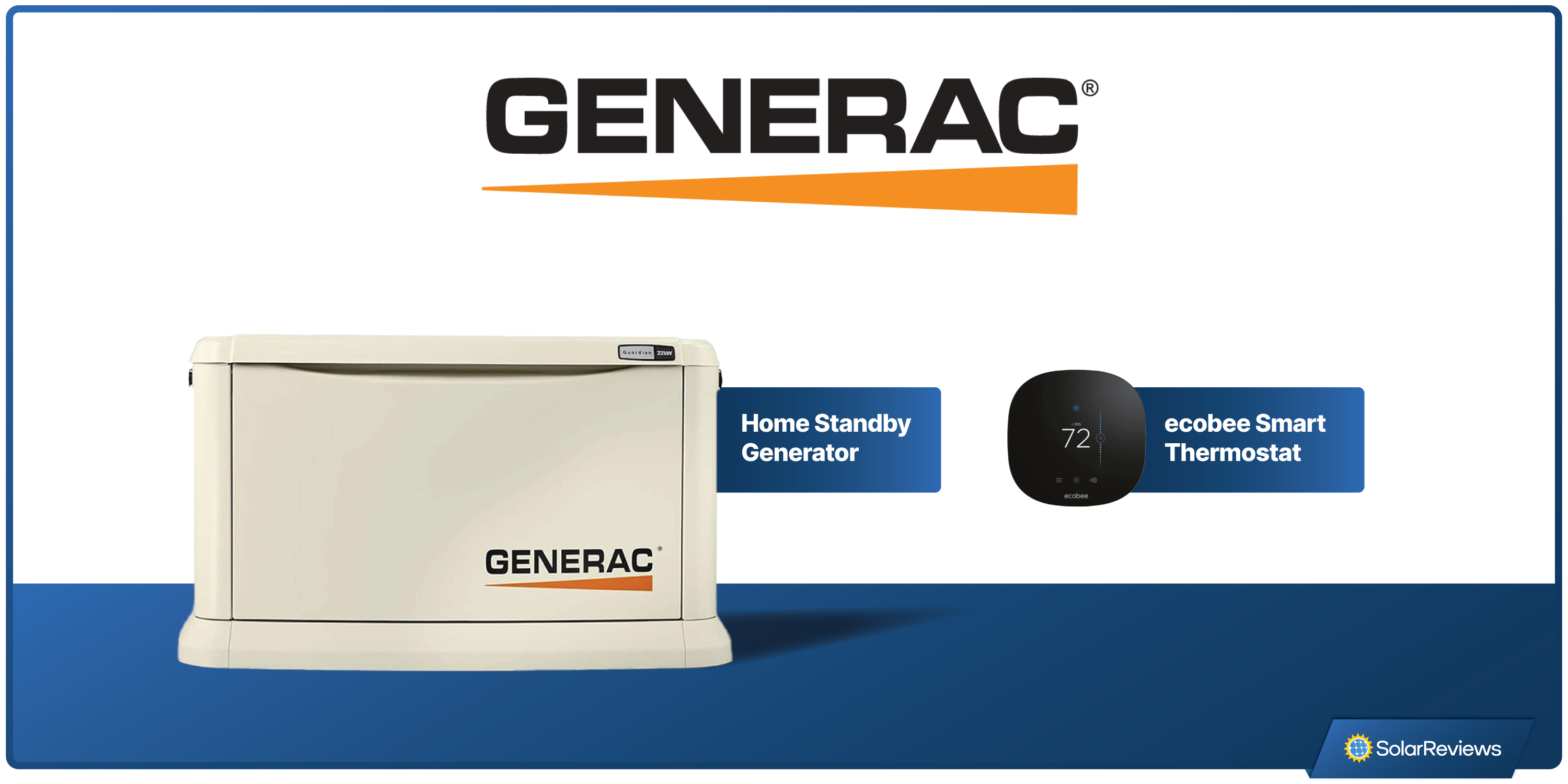
In addition to the three main components, the Generac PWRcell can be used with the ecobee Smart Thermostat and a Generac home standby generator. Generac also has an app called PWRview that allows you to control the system.
The ecobee Smart Thermostat can control how the PWRcell battery is used in an outage. The thermostat screen shows an alert when a power outage occurs and displays battery status. Its software can automatically change the temperature setpoint of the home’s HVAC system to prolong battery life.
Using a Generac home backup generator with the PWRcell system allows you to power your home during long power outages, even with little or no solar power. The Generac SDS can automatically activate the gas generator to charge the battery when it gets low.
Generac PWRcell 2 configuration options
The PWRcell 2 is an integrated home energy backup system, which means it must be installed with all the main components (battery cabinet, inverter, and smart disconnect switch) to work. However, those components can be mixed and matched to meet each homeowner's needs.
Here are three configurations that we think will be the most popular ways to configure the PWRcell system:
Generac PWRcell whole home backup
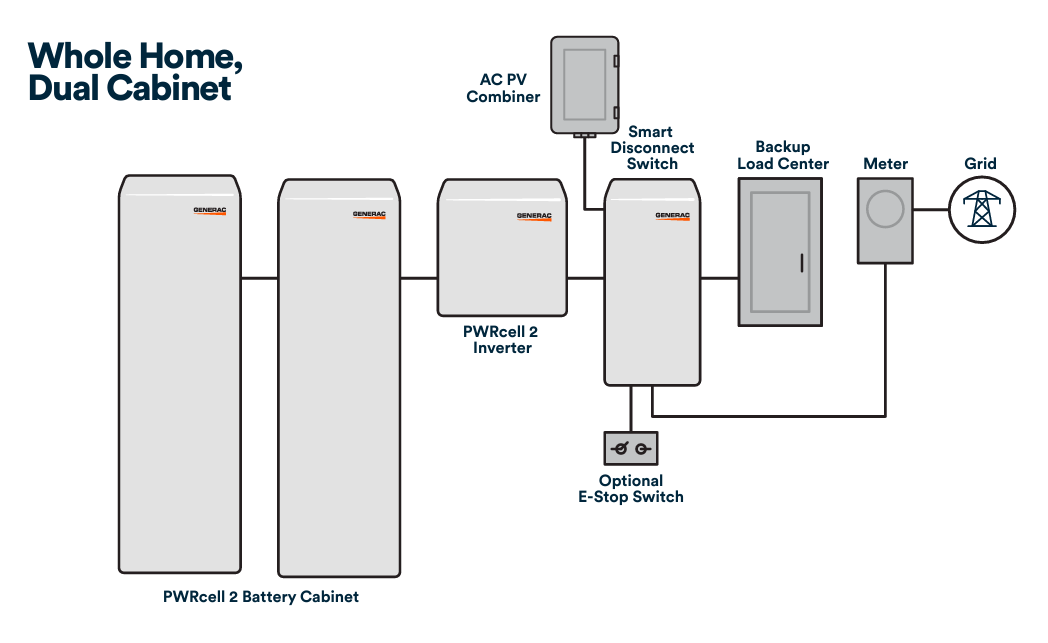
Whole-home backup with two battery cabinets Image source: Generac
The image above shows the Generac PWRcell system setup for whole-home backup, with two PWRcell battery cabinets for storing energy and a PWRcell inverter to convert the DC power that flows from the batteries into AC for use in the home (and vice-versa). The home also has a photovoltaic (PV) solar system on the roof that outputs AC power.
The whole system is tied together in the Smart Disconnect Switch (SDS), which is connected between the meter and electrical panel (labeled “Backup Load Center”). Power can flow through the SDS in a number of ways:
Grid power can flow into the SDS to power the home or charge the battery.
AC power from solar can power the home, charge the battery, or be exported to the grid.
Battery power can flow in both directions, receiving power to charge from the grid and solar power, or transmitting power to the home or grid.
If there is a power outage, the SDS automatically shuts down the grid connection, preventing power from flowing back and damaging wires until the grid is restored. During an outage, the home can be powered by solar, batteries, or both at once.
Partial home backup
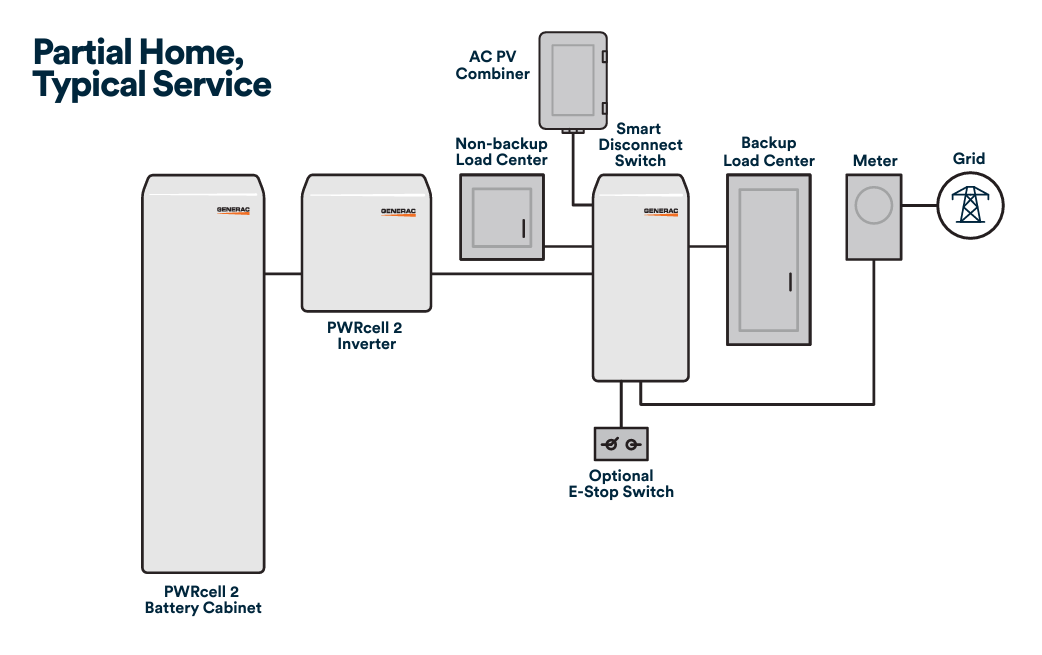
Partial-home backup with one battery cabinet Image source: Generac
In this partial-home backup scenario, the PWRcell system setup is similar. The only difference here is that some of the home’s appliances with the largest power draw have been redirected to a second “non-backup” load center.
These could be large air conditioners, clothes dryers, electric stoves, or other resistant heating appliances. In case of a power outage, the SDS will deactivate these circuits to extend battery capacity.
Importantly, this setup allows the homeowner to expand the battery capacity in the future and choose whole home backup instead.
Gas generator integration
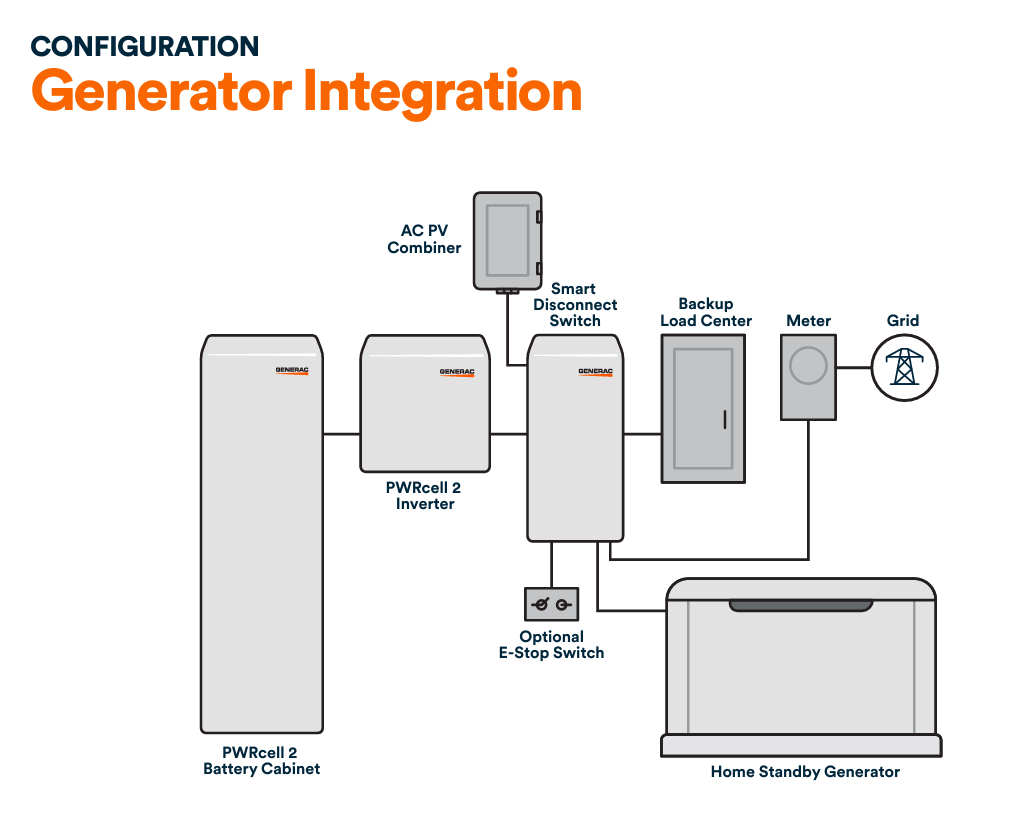
Whole home backup with one battery cabinet and a standby generator Image source: Generac
Finally, we have a whole home backup scenario that also includes a stand-by generator. The SDS can remotely activate the generator to “top up” the batteries if the capacity drops below a certain level.
In this way, the system can efficiently use the generator and doesn’t have to keep it running throughout the outage.
Generac PWRcell 2 warranty
Generac provides a 10-year product and workmanship warranty for the major components of the PWRcell system, including the inverter, battery cabinet, and SDS. In addition, the company provides a battery module capacity warranty, which states that each module will retain at least 70% of its capacity for 10 years, or up to 7.56 MWh of battery throughput (charging and discharging).
A 10-year warranty is about standard for the industry, but more manufacturers are moving to 12 or 15 years of warranty coverage on batteries. Additionally, the 7,560 kWh throughput warranty is equal to 2,520 full 3 kWh cycles. This is significantly lower than the number of charging cycles from lithium iron phosphate batteries made by companies like Enphase (6,000 cycles) and FranklinWH (10,000 cycles).
Generac PWRcell 2 vs the competition
Generac has put a lot of work into designing the PWRcell 2. There’s no doubt the latest setup is a more refined energy management system than the company’s first iteration of the PWRcell, but the comparison that really matters is how it matches up to the competition.
Generac’s main competitors in the home backup battery market are Enphase, Tesla, and FranklinWH. Here’s how their flagship products match up:
Brand/model | Capcity (kWh) | Max cont. power (kW) | Battery chemistry | Warranty details | Solar input | Est. installed cost |
|---|---|---|---|---|---|---|
Generac PWRcell M6 | 18 | 10.3 | NMC | 10 years, 45.36 MWh before 70% capacity | 19.2 kW, AC only | $25,000 |
Tesla Powerwall 3 | 13.5 | 11.5 | LFP | 10 years, unlimited cycles | 20 kW DC and 7.68 kW AC | $15,600 |
Enphase IQ System (3x IQ 5P batteries) | 15 | 11.52 | LFP | 15 years, 6,000 cycles before 60% capacity | 19.2 kW, AC only | $20,000 |
FranklinWH aPower2 | 15 | 10 | LFP | 15 years, 10,000 cycles before 70% capacity | 19.2 kW, AC only | $20,000 |
Of the models in the table, the Tesla Powerwall's price is the most affordable and the only one to offer versatility in how it is connected to solar panels. However, the Tesla and FranklinWH batteries come in one size only, meaning a homeowner has to purchase double the capacity if they need more than the initial number of kWh.
Enphase offers an expensive system, but it can be expanded up to 40 kWh (in increments of 5 kWh), and the system's power output increases for each IQ5P battery added. That could be huge if you have a power-hungry home.
The Generac PWRcell is the most expensive system on a dollars-per-kWh basis and the only battery in the lineup to use the more energy-dense but less fire-resistant lithium NMC battery chemistry. However, Generac's expandability, generator integration, and smart thermostat integration are still good selling points.
Is the Generac PWRcell 2 right for you?
The Generac PWRcell 2 is a robust, well-designed energy storage and management system from one of the most successful companies in home backup power. The system’s capabilities put it on par with many other industry-leading solutions and can provide homeowners with an effective way to store energy for backup and consume all the solar power they generate.
On the other hand, the PWRcell system is one of the more expensive home energy storage solutions on the market. Despite offering good functionality, it is not as affordable as the Tesla Powerwall 3 nor as powerful as a fully configured Enphase home energy management system.
If you already have a compatible Generac generator and want to add energy storage and management, this can be a good solution for you. Similarly, if you’re working with a great solar installation company and they recommend the Generac system for your personal use case, this is also a good solution.
Ben Zientara is a writer, researcher, and solar policy analyst who has written about the residential solar industry, the electric grid, and state utility policy since 2013. His early work included leading the team that produced the annual State Solar Power Rankings Report for the Solar Power Rocks website from 2015 to 2020. The rankings were utilized and referenced by a diverse mix of policymakers, advocacy groups, and media including The Center...
Learn more about Ben Zientara